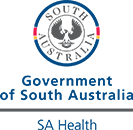Diabetes
Key facts
- Diabetes mellitus, more commonly known as diabetes, causes high blood glucose (sugar) levels.
- Diabetes happens when your pancreas can’t make enough of the hormone insulin or your body becomes resistant to it.
- Symptoms of diabetes are feeling thirsty and passing more urine (wee) than usual.
- Common types of diabetes are type 1 diabetes, type 2 diabetes and gestational diabetes.
- Diabetes can be treated with a healthy lifestyle and medicines to control your blood glucose levels.
What is diabetes?
Diabetes mellitus is more commonly known as diabetes. It’s a health condition where there is too much glucose (sugar) in your blood.
Your blood glucose levels are normally controlled by a hormone called insulin. Insulin controls the amount of glucose in your blood. It helps glucose move from your bloodstream into your cells, where it can be used for energy.
Without insulin, glucose stays in your blood. This causes hyperglycaemia (high blood sugar).
Diabetes happens when:
- your pancreas can’t make enough insulin
- your body does not respond properly to insulin
There are several types of diabetes. The most common types are:
- type 1 diabetes
- type 2 diabetes
- gestational diabetes — diabetes that starts when you’re pregnant
Pre-diabetes is when your blood glucose levels are higher than normal, but not high enough for a diagnosis of type 2 diabetes.
What are the symptoms of diabetes?
Common symptoms of diabetes are:
- being very thirsty (or hungry)
- urinating (doing a wee) more often than usual
- feeling tired
- weight loss (for type 1 diabetes), or gradual weight gain (for type 2 diabetes)
- having wounds that heal slowly
- frequent infections, including urinary tract infections (UTIs)
- blurred vision
Type 1 diabetes is usually spotted quickly as symptoms can appear suddenly. Many people with type 2 diabetes and gestational diabetes don’t have any symptoms.
CHECK YOUR SYMPTOMS — Use the Symptom Checker and find out if you need to seek medical help.
What causes diabetes?
The exact cause of diabetes depends on the type. But in all types of diabetes, your blood sugar levels are too high.
Type 1 diabetes can happen at any age but is more commonly diagnosed in young people — children, teenagers and young adults.
Your chance of having type 2 diabetes increases with age. But it’s possible for young people and even children to have type 2 diabetes.
Gestational diabetes is diabetes that happens during pregnancy.
When should I see my doctor?
See your doctor if you have symptoms of diabetes or concerns about your risk of diabetes.
If you or your child have symptoms of diabetes and are unwell, see your doctor immediately or go to your nearest hospital emergency department.
Even if you don’t have symptoms, your doctor should:
- check your risk of type 2 diabetes regularly
- check for high blood glucose levels during pregnancy as part of your routine antenatal tests
Early diagnosis and treatment of diabetes can help to reduce your risk of complications.
FIND A HEALTH SERVICE — The Service Finder can help you find doctors, pharmacies, hospitals and other health services.
How is diabetes diagnosed?
Your doctor will ask about your symptoms and examine you. They will also ask about your general health and family medical history.
Your doctor will do blood glucose tests. You may have a:
- random blood glucose test (finger-prick blood test) — where you don’t need to stop eating before the test. Other tests may be needed to confirm your diagnosis.
- fasting blood glucose test — where you don’t eat for several hours before the test
- oral glucose tolerance test — where you have blood glucose tests after you drink a sugary drink
- HbA1c test — which indicates how much sugar has been in your blood over the past few months
If you’re pregnant, your doctor will screen for gestational diabetes as part of your standard antenatal testing.
Urgent testing
If you are unwell and your doctor thinks diabetes could be why you feel unwell, they will:
- do a random blood glucose test (finger-prick test) to quickly check your blood glucose level
- test your urine for glucose and ketones
If these tests show high levels of glucose, your doctor will recommend you go to the nearest hospital emergency department for more tests and treatment.
Emergency treatment in hospital is needed for children, teenagers and adults with type 1 diabetes.
If you are diagnosed with type 1 diabetes, you will be referred to a specialist diabetes team for ongoing care.
ASK YOUR DOCTOR — Preparing for an appointment? Use the Question Builder for general tips on what to ask your GP or specialist.
How is diabetes managed?
While there is no cure for diabetes, it can be managed with lifestyle changes and medicines.
Healthcare professionals who may be involved in your diabetes care include:
- your doctor
- an endocrinologist (a doctor who specialises in diabetes)
- a diabetes educator
- a dietitian
- a podiatrist — a healthcare professional who looks after your feet
You may need to regularly monitor your blood sugar levels. You can do this with the help of your doctor and diabetes educator.
Type 1 diabetes
If you have type 1 diabetes, you will need to have insulin replacement. This may be through injections or an insulin pump or pen. This helps control your body’s blood glucose levels.
Having a healthy diet and being physically active can also help control your blood glucose levels and improve your health.
Type 2 diabetes
Type 2 diabetes can sometimes be controlled with lifestyle measures, such as eating a healthy diet and being physically active.
Eventually, you may need to take medicines to control your blood glucose levels. Some medicines can also reduce your risk of heart and kidney disease.
Your doctor may prescribe tablets or injectable diabetes medicines (insulin or others). These will help to keep your blood glucose levels in the target range.
Gestational diabetes
Gestational diabetes is managed by keeping your blood glucose levels within a healthy range for pregnancy.
This usually involves a healthy eating plan and regular physical activity. You may need medicine or insulin if you don’t get good glucose control with lifestyle changes alone.
It’s important to monitor your blood glucose levels and have regular check-ups with your doctor.
Watch this video from Diabetes Victoria to learn how to manage your diabetes. The video is available in multiple languages.
Living with diabetes
If you have type 1 or type 2 diabetes, your healthcare professional will recommend lifestyle measures, such as eating a healthy diet and being physically active. They will also recommend regular health checks and tests, including:
- blood tests to check your blood glucose control and kidney function
- blood pressure checks
- eye tests
- foot care checks
Psychological support is also important.
What are the complications of diabetes?
Diabetes is a complex disease that can affect your whole body. Long-term type 1 and type 2 diabetes complications can include:
- heart disease
- stroke
- peripheral vascular disease (narrowing of the arteries in your legs and feet)
- kidney failure
- eye complications
- foot problems
- nerve problems
It’s also possible to have short-term complications, such as:
- diabetic ketoacidosis
- hypoglycaemia (low blood sugar) related to treatment
- infections
Diabetic ketoacidosis (DKA) is a medical emergency. If you or someone you are with have symptoms of DKA, call triple zero (000) for an ambulance.
If you or someone you are with develops signs of hypoglycaemia, call triple zero (000) and ask for an ambulance. State that it is a diabetes emergency. If the person can’t swallow, don’t try to give them anything to eat or drink.
Diabetes can also affect your mental health. It can increase your risk of depression and anxiety.
Gestational diabetes can increase your risk of pregnancy complications. Having gestational diabetes also increases your risk of developing type 2 diabetes.
There are many ways you can lower your risk of complications. Talk to your doctor or a diabetes educator about how to look after yourself. This may minimise or even stop diabetes complications.
Can diabetes be prevented?
While type 1 diabetes can’t be prevented, there is clear evidence that you can delay or stop type 2 diabetes.
Healthy habits that can help prevent type 2 diabetes include:
- healthy eating
- keeping a healthy weight, or losing weight if you are overweight or obese
- regular physical activity
You can also lower your risk of type 2 diabetes by not smoking and limiting the amount of alcohol you drink.
Having a healthy weight before pregnancy can help reduce your risk of gestational diabetes.
If you have pre-diabetes, weight loss and lifestyle changes can stop you getting type 2 diabetes.
Resources and support
Visit Diabetes Australia for information and resources. You can also:
- call Diabetes Australia on 1800 177 055
- find resources for Aboriginal and/or Torres Strait Islander people
- get multicultural resources
- use the Diabetes Australia risk calculator
The National Diabetes Services Scheme (NDSS) has resources, support services and subsidised diabetes products. The NDSS website also has diabetes information in languages other than English.
FootForward for diabetes is a program designed to help people understand the importance of getting your feet checked.
You can sign-up for eye check reminders at KeepSight Australia.
You can also call the healthdirect helpline on 1800 022 222 (known as NURSE-ON-CALL in Victoria). A registered nurse is available to speak with you 24 hours a day, 7 days a week.
Learn more here about the development and quality assurance of healthdirect content.
Last reviewed: November 2024
















